Introducción
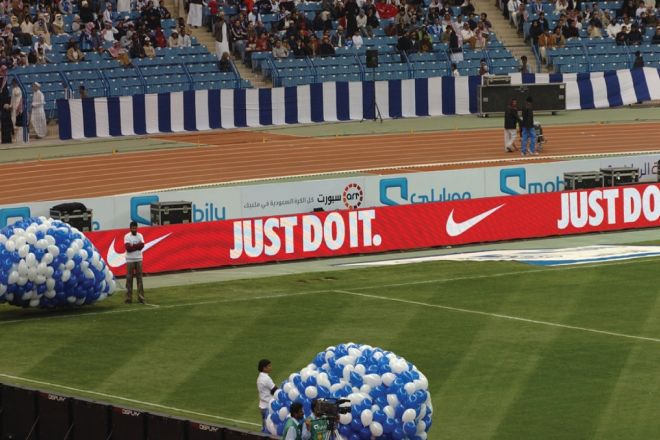
Con el continuo desarrollo de la ciencia y la tecnología, pantallas LED are increasingly used in sports venues. Not only do they provide viewers with clear, real-time game information, but they also provide important visual aids to athletes, coaches, and referees. However, to install and use LED displays in professional stadiums, a series of strict requirements must be met.
1. Installation location and quantity
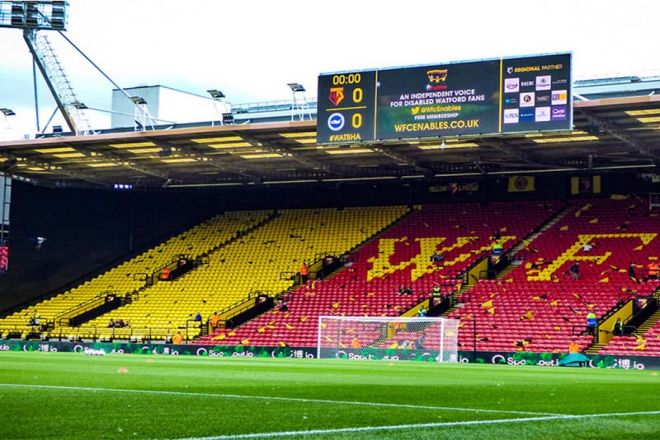
In professional stadiums, the installation location and quantity of LED displays play a decisive role. These decisions not only affect the spectators’ viewing experience but are also directly related to the acquisition of game information by athletes, coaches, and referees.
En primer lugar, the installation location of the LED display must be carefully designed to ensure that at least 95% of the audience with formal fixed seats in the venue can meet the maximum viewing distance requirements.
This means that the display needs to be placed so that it can cover the widest possible audience area so that viewers can easily see what is on the display, whether they are in the front or back rows of the stands. This layout helps ensure that every spectator can get a good visual experience and not miss every exciting moment of the game.
En segundo lugar, the layout of the display screen needs to consider the visual needs of athletes, coaches, and referees fully. During the game, they need to obtain real-time game information, tactical guidance, performance updates, etc.
Therefore, the position and angle of the display need to be carefully adjusted to ensure that these key personnel can clearly see the content on the display so that they can make accurate judgments and decisions during the game.
Finalmente, the number of displays is also a factor to consider. Too many displays may cause visual interference, while too few may not meet the visual needs of spectators and game personnel.
Therefore, when determining the number of display screens, factors such as the size of the venue, the layout of the auditorium, and the characteristics of the competition events need to be comprehensively considered to achieve the best visual effects and viewing experience.
2. Reliability and security
In the selection and installation process of LED display screens in stadiums, reliability, and safety are undoubtedly the two core requirements. This is not only related to the stable operation of the equipment but also directly related to the safety of spectators, athletes, and all personnel in the venue.
En primer lugar, the reliability of the display is the basis for ensuring its continuous and stable operation. Stadium LED displays need to run for a long time and withstand various complex environments, such as high temperature, high humidity, dust, etc.
Therefore, the reliability of the display must meet industry standards, such as SJ/T11141-2003, etc., to ensure that it can work normally in various environments without problems such as malfunctions or screen flickers.
Al mismo tiempo, the safety performance of the display is also crucial. This includes not only the fire protection, lightning protection, waterproofing, and other safety properties of the display itself, but also the safety during its installation, maintenance, and use.
The display screen should be designed and manufactured in strict accordance with relevant safety standards, such as the safety requirements in SJ/T11141-2003, to ensure that no harm is caused to personnel during use.
In order to ensure the stable operation of the display screen, the display screen should be powered separately and comply with the relevant standards for cable line construction acceptance, such as GB50168 and GB50171.
This means that the display’s power supply should be independent of other equipment in the venue to avoid malfunctions caused by power issues. At the same time, the laying and connection of cable lines should comply with relevant standards to ensure stable transmission and current safety.
Además, engineering quality is also an important factor in ensuring the reliability and safety of the display. The installation, debugging, and maintenance of the display screen should be carried out by professional engineers and must comply with engineering quality standards such as GB50303.
This means that during the installation process of the display screen, construction should be carried out in strict accordance with the design plan to ensure that every detail meets the standards to avoid safety hazards caused by project quality issues.
3. High brightness and visibility
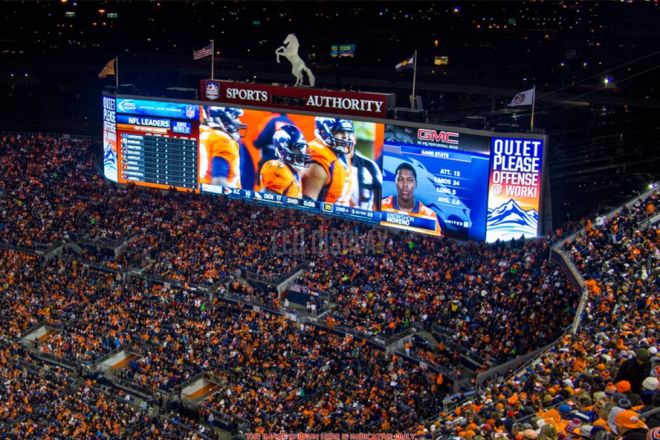
In the specific application environment of sports venues, the high brightness and visibility of LED displays are one of its core performance indicators. Since sports venues usually have open stands or skylights, the indoor light is strongly affected by the outdoor environment.
Especially during the clear day, strong sunlight may make the indoor light extremely bright. Therefore, the LED display needs to have high enough brightness to ensure that the content can still be clearly displayed under strong light and provide accurate game information to the audience.
The high-brightness display can not only maintain the clarity of the content under strong light but also improve the audience’s viewing experience.
When viewers can easily see what’s on the display, they can be more engaged in watching the game and not miss any exciting moments. In addition, high-brightness displays can also enhance the visual effects of the venue and create a more exciting game atmosphere.
In addition to high brightness, the visibility of LED displays is also crucial. Visibility refers to the ability of a display to be clearly seen at different angles and distances. In sports venues, the audience seats are widely distributed, and some viewers may be further away from the display or at different angles.
Therefore, LED displays need to have wider viewing angles and higher contrast to ensure that content can be displayed clearly at different positions and angles.
The improvement of high brightness and visibility not only requires advanced technology and design of the display itself but also requires fine adjustments during installation and commissioning.
The installer needs to select the appropriate installation location and angle based on the actual conditions of the venue and the distribution of the auditorium and make necessary brightness and contrast adjustments to ensure that the display can provide the best visual effects in various environments.
4. Large size and resolution
In sports venues, LED displays are not only a tool to convey game information but also an important element in creating a live atmosphere and enhancing the audience experience. Therefore, large size and high resolution have become indispensable features of stadium LED displays.
En primer lugar, the large-sized display screen can cover a wider auditorium area, ensuring that every audience member can see the content on the display screen. In sports venues, auditoriums are often widely distributed. Some spectators may be far away from the display screen, while others may be in more remote corners.
If the size of the display is too small, these viewers may not be able to clearly see the content on the display, thus affecting their viewing experience. The large display screen can cover a larger area so that no matter where the audience is, they can easily see the game information on the display screen.
En segundo lugar, a high-resolution display can provide clearer and more detailed images and videos. In a game, every detail may become the key to victory or defeat, so the audience needs to be able to clearly see every action and expression.
The high-resolution display can present a more detailed picture, allowing the audience to feel the intensity and tension of the game more realistically. At the same time, high resolution can also bring richer colors and layers, making images and videos more vivid and lifelike.
Además, large-size and high-resolution displays can also enhance the overall visual effect of sports venues. When the audience enters the venue, a huge, clear display screen often becomes their first visual focus, leaving a deep impression on them.
At the same time, during the game, the exciting pictures and real-time information on the display will also become the focus of the audience’s attention, giving them a more immersive viewing experience.
Of course, achieving large-size and high-resolution displays requires advanced technology and sophisticated manufacturing processes.
At the same time, during the design and installation process, factors such as the structure of the venue and the distribution of the auditoriums need to be fully considered to ensure that the display screen can achieve the best visual effects and viewing experience.
5. Fast response time and high contrast
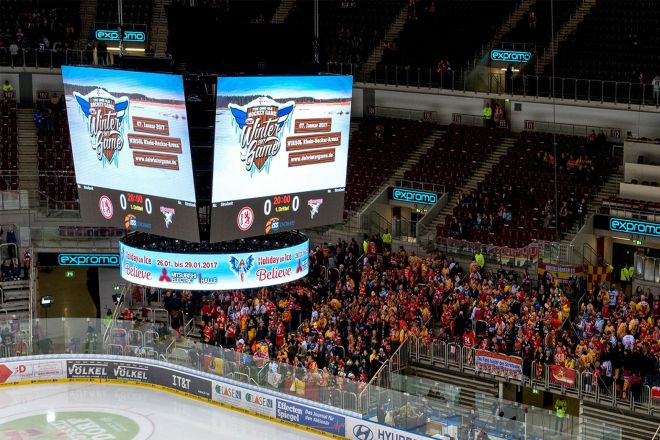
In sports competitions and performances, every detail is crucial, and as a medium to convey these details, the performance of LED displays directly affects the audience’s viewing experience. Therefore, fast response time and high contrast have become two important features that are indispensable for stadium LED displays.
En primer lugar, fast response time is crucial for LED displays. In sports competitions, the pace of the game is fast, and the screen switches frequently, which requires the display screen to respond quickly and update the screen content.
If the response time of the display is too slow, the picture may be blurred, smeared, or even torn, which will greatly affect the audience’s viewing experience. Therefore, stadium LED displays need to adopt advanced display technology, such as high refresh rate technology, to ensure that clear and smooth image effects can be maintained when switching screens quickly.
En segundo lugar, high contrast is also one of the important requirements for stadium LED displays. Contrast refers to the brightness ratio of the brightest part to the darkest part on the screen, which determines the layering and visual effect of the image. The high-contrast display screen can present a more vivid and clear picture, allowing every detail in the game to be perfectly presented.
In sports competitions and performances, audiences often need to capture every movement and expression of athletes through a display screen. Therefore, a high-contrast display screen can better meet this need and give the audience a more realistic and vivid viewing experience.
Además, the high-contrast display can effectively resist interference from external light. In sports venues, due to the openness of the auditorium and the exposure to outdoor light, the display screen is often subject to certain light interference.
If the contrast of the display is not high enough, problems such as reflection and glare may occur, affecting the audience’s viewing experience. A high-contrast display can effectively reduce these interferences and ensure that viewers can clearly see the content on the display under any lighting conditions.
6. Dustproof, waterproof, and heat dissipation performance
As an open place, the stadium’s LED display screen must not only face the audience’s sight but also face challenges brought by various weather and environmental factors. Therefore, dustproof, waterproof, and heat dissipation performance are factors that cannot be ignored in the design of stadium LED displays.
En primer lugar, dustproof and waterproof capabilities are the key to ensuring the stable operation of LED displays. There are many spectators and dense crowds in the stadium, which can easily bring dust and other pollutants.
At the same time, since sports venues often have outdoor games or activities, rain, fog, etc., may also cause damage to the display screen. Therefore, LED displays need to have excellent dust-proof and waterproof capabilities to prevent dust and moisture from invading the interior of the equipment and causing short circuits, corrosion, and other failures.
By adopting dustproof and waterproof casing and sealing materials, the internal circuits and components of the display can be effectively protected, ensuring its stable operation in harsh environments.
En segundo lugar, heat dissipation performance is also an important factor that must be considered for stadium LED displays. LED displays will generate a certain amount of heat during operation, especially when operating under high load for a long time.
If heat cannot be dissipated in time, the internal temperature of the display will rise, affecting its stability and lifespan. Therefore, stadium LED displays need to adopt efficient heat dissipation designs, such as reasonable heat dissipation layout, efficient heat dissipation materials, cooling fans, etc., to ensure that the display can dissipate heat in time during operation and maintain a low operating temperature.
This not only extends the life of the display but also improves its stability and reliability.
7. Real-time control and flexible content update
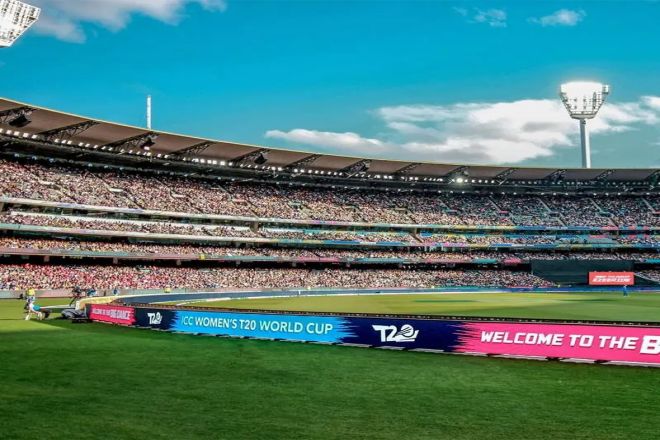
As an important medium for information transmission, the stadium LED display screen not only needs to accurately display real-time information such as rolling timing and results of the game but also needs to have a high degree of flexibility and real-time control capabilities to meet the needs of different competitions and activities.
Primero, the real-time control feature ensures that the display responds quickly and updates content. During the game, various information such as scores, time, player names, etc., is constantly changing, which requires the display screen to obtain this information in real-time and update it to the screen in the shortest possible time.
By using advanced control systems and high-speed data transmission technology, the stadium LED display can achieve millisecond-level response speeds, ensuring that audiences can obtain the latest game information at any time.
En segundo lugar, the functions of turning pages and switching displayed content further enhance the flexibility and practicality of the display. During breaks in games or performances, the display can switch to other content, such as advertisements, promotional videos, real-time news, etc., to provide the audience with more information choices and visual enjoyment.
At the same time, according to the needs of different competitions and activities, the display screen can also be customized with specific display content, such as celebration slogans, countdowns, etc., to create a more exciting atmosphere.
Real-time control and flexible content updating not only improve the functionality of the stadium LED display but also greatly enrich the audience’s viewing experience.
The audience can understand the game process and results more intuitively and can also enjoy more diversified visual content. This sense of interactivity and participation allows viewers to become more deeply involved in the games and activities, improving the overall viewing experience.
Therefore, when designing and selecting stadium LED displays, attention should be paid to their capabilities of real-time control and flexible content updating.
Through advanced control systems and flexible display content design, it is possible to ensure that the display screen can accurately convey information in real-time while improving the audience’s viewing experience.
Conclusión
To sum up, the LED display screen in the stadium needs to meet a series of strict requirements. Only by meeting these requirements can the LED display screen play its best role in the stadium and bring a better viewing experience to the audience.
Finalmente, si quieres saber más sobre las pantallas LED, Por favor póngase en contacto con nosotros.
